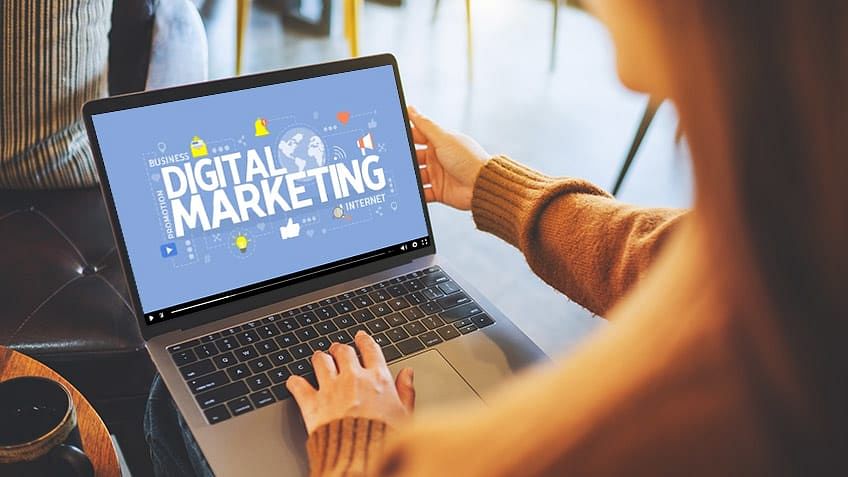Enhance Individual Experience and Drive Website Traffic With Responsive Website Design
In today's electronic landscape, where users are accessing internet sites from a wide variety of tools, receptive website design has become more crucial than ever before. With its capability to adapt and perfectly adjust to different display sizes, responsive design not just boosts individual experience but additionally drives traffic to your web site. Why is this style technique so critical? Exactly how does it boost individual involvement and increase web site traffic? In this conversation, we will discover the essential components of efficient responsive design, explore the best practices for its implementation, and discover the keys to improving customer experience while driving even more website traffic to your website.
Why Responsive Website Design Issues
Receptive website design is an important aspect of contemporary web development because of its ability to ensure optimum customer experience across numerous devices and screen dimensions. With the expansion of smartphones, tablets, and various other mobile phones, it has actually come to be essential for sites to adjust and provide smooth functionality no matter the gadget being utilized.
The key factor why responsive internet design issues is that it allows individuals to have a satisfying and constant browsing experience, regardless of the gadget they are utilizing. A responsive internet site automatically adjusts its material, layout, and design aspects to fit the screen size and resolution of the gadget, ensuring that individuals can quickly engage and browse with the web site with no hassle or frustration.
Furthermore, responsive web design likewise plays a significant role in seo (SEARCH ENGINE OPTIMIZATION) Online search engine, such as Google, focus on sites that are responsive and mobile-friendly in their search engine result. By incorporating responsive layout principles, web sites can enhance their exposure and ranking, leading to raised natural website traffic and possible clients.

Boosting User Interaction Via Responsive Design
Enhancing customer involvement is a crucial goal of responsive style, as it makes certain that users can quickly gain access to and connect with website material on any type of gadget. With the raising usage of smartphones and tablets, it is essential for sites to adapt to various display sizes and resolutions. Responsive design allows web sites to immediately change their design and material to offer a seamless individual experience across gadgets.
One of the primary methods responsive design boosts user engagement is by decreasing load times. With a responsive site, individuals don't have to await different mobile variations to tons, resulting in faster accessibility to web content. This enhanced speed results in higher customer fulfillment and motivates them to spend even more time on the website.
Furthermore, responsive style enhances user involvement by enhancing navigation and interface (The Ad Firm web design agency). When a website is designed responsively, buttons and food selections are optimized for touch communications, making it less complicated for individuals to engage and navigate with the website on their mobile gadgets. This instinctive and straightforward experience keeps customers engaged and encourages them to explore more of the website
Moreover, receptive layout allows for much better material presence and readability. By adapting the format and font style dimensions to different gadgets, responsive web sites make sure that users can quickly read and comprehend the web content. web design rates This boosts user interaction by reducing the requirement for zooming or scrolling to check out the message.
Increasing Web Site Website Traffic With Responsive Web Layout
With the expanding appeal of mobile phones, having a web site that is responsive to various display dimensions and resolutions is necessary for driving raised traffic. In today's digital landscape, users are accessing sites from a range of gadgets such as mobile phones, tablet computers, and home computer. Each of these gadgets has different screen sizes and resolutions, and if your site is not developed to adapt to these variations, it can bring about an inadequate user experience and a loss of potential traffic.
Receptive website design makes sure that your web site looks and works efficiently across all devices. By utilizing flexible grids, liquid pictures, and media inquiries, responsive style enables your website to instantly change its design, content, visite site and navigating to fit any display dimension. This indicates that individuals will certainly have a smooth browsing experience no matter of whether they are utilizing a huge desktop or a tiny mobile phone computer.
Crucial Element of Reliable Responsive Layout
Efficient receptive layout incorporates a number of vital elements that make sure a smooth user experience across various tools. This allows content to be shown in a readable and visually attractive fashion on any kind of device.
One more essential aspect is media questions. These permit developers to apply different styles and designs based on the attributes of the individual's tool, such as screen size and positioning. By making use of media queries, designers can optimize the discussion of web content for each device, making sure that it is quickly obtainable and legible.
Responsive images are additionally essential in reliable receptive layout. Photos that are also huge can reduce down web page tons times on smart phones, while pictures that are too small may appear pixelated on larger displays. By utilizing strategies such as receptive picture resizing and lazy loading, developers can make certain that photos are suitably sized and maximized for every gadget.
Lastly, effective receptive layout includes a mobile-first approach. This suggests making and focusing on content for smart phones initially, and after that expanding and boosting the style for bigger screens. This approach ensures that one of the most crucial web content is easily obtainable on smaller displays, while still giving an abundant experience on bigger gadgets.
Best Practices for Implementing Receptive Website Design
Executing sites receptive website design needs mindful consideration of various ideal techniques to ensure an ideal user experience throughout different gadgets. When implementing responsive internet layout., right here are some vital best methods to adhere to.
Firstly, it is vital to prioritize mobile individuals. With the raising dominance of mobile gadgets, making for mobile-first has ended up being vital. Beginning deliberately for smaller sized displays and after that progressively improve the format for larger screens.

An additional essential ideal method is to maximize pictures for various screen resolutions. Huge pictures can reduce the loading time of your site, especially on mobile tools with slower links. Usage receptive images that can be resized based upon the device's screen resolution to boost efficiency.
Furthermore, examination your site on various devices and screen dimensions to ensure a seamless and regular experience. There are numerous testing tools readily available that can help you determine any type of concerns and make required modifications.
Last but not least, prioritize functionality and accessibility. Guarantee that your web site is very easy to navigate, with succinct and clear web content. See to it that your site is obtainable to people with disabilities and complies with access standards.
Conclusion
In conclusion, receptive web layout plays a vital role in boosting user experience and driving website traffic to web sites. By adopting receptive design concepts, websites can make sure optimum watching experiences across various devices, leading to raised user involvement.
Optimizing customer engagement is an essential objective of responsive style, as it ensures that individuals can conveniently access and engage with website material on any type of tool. Receptive design allows websites to automatically change their design and web content to offer a smooth customer experience across devices.
Furthermore, receptive layout improves customer involvement by improving navigation and individual interface.Receptive photos are additionally important in effective receptive layout. By taking on responsive design principles, sites can make sure optimum seeing experiences throughout various tools, leading to increased user engagement.